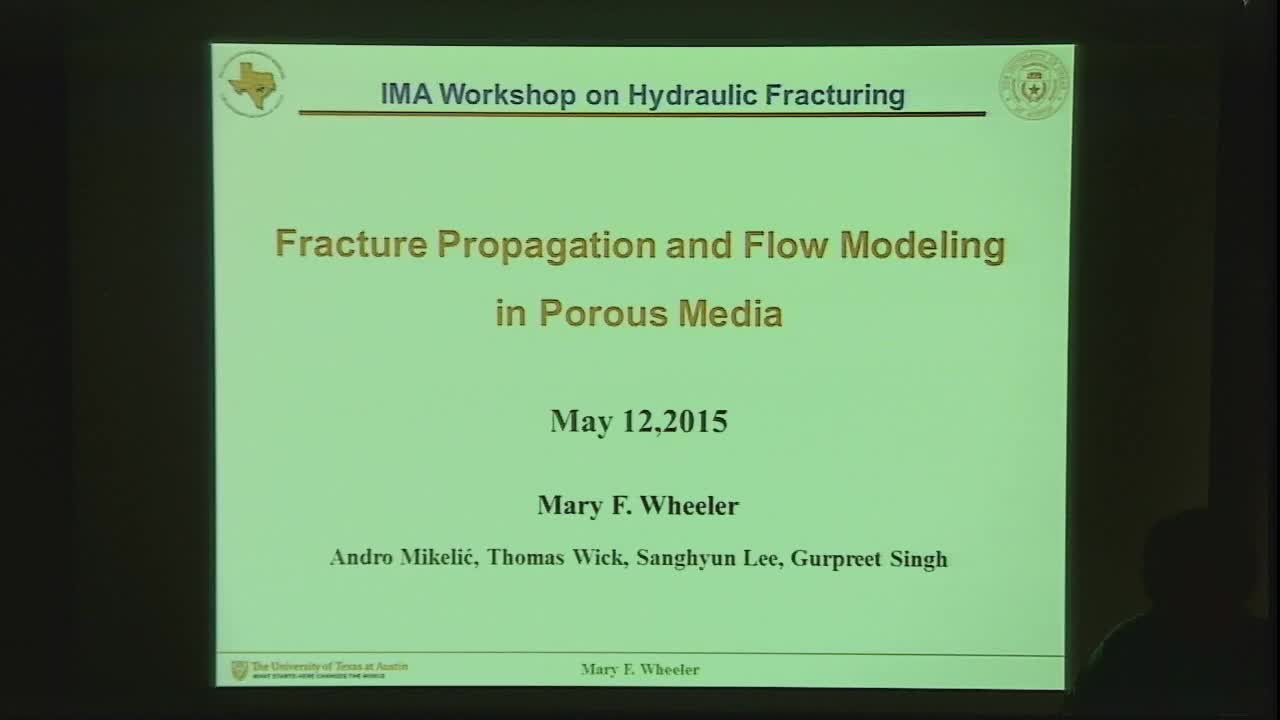Coupling Flow and Mechanics in a Fractured Porous Medium
Presenter
May 12, 2015
Keywords:
- Fluid mechanics
Abstract
Phase field modeling has been used for the past decade in modeling fractures in an elastic medium. In collaboration with Andro Mikelic, Thomas Wick, and Sanghyun Lee, we have extended this method to a fluid-driven fracture in a poroelastic medium. Here, the mathematical model represents a linear elasticity system with fading elastic moduli as the crack grows. It is coupled with an elliptic variational inequality for the phase fi
eld variable and with the pressure equation. For modeling this system we couple a pressure diffraction equation to a fully-coupled displacement-phase field approach. This coupling is realized in terms of a fixed-stress splitting in which we first solve for the pressure and then for the displacement-phase field variables. The latter system is treated with a primal-dual active set approach that includes treatment of crack irreversibility. We further discuss numerical solution algorithms as well as several numerical examples for verification. Specifically, we demonstrate that the phase field approach allows one to study complex fracture patterns including non-planar crack growth, joining and branching phenomena. From the computational point of view, local mesh adaptivity is employed in order to enhance the local resolution of the phase field regularization parameter while keeping the computational cost reasonably low. A decoupling approach, such as fixed-stress, is useful for treating realistic complex multiphase flows in fractured porous media.
Another aspect of our modeling requires recovery predictions from a fractured reservoir for long term production in the absence of fracture growth. In collaboration with Gurpreet Singh, a coupled reservoir-fracture flow model which accounts for varying reservoir geometries and complexities including non-planar fractures has been developed. We utilize different flow models such as Darcy flow and Reynold’s lubrication equation for fractures and reservoir respectively, to closely capture the multiphase flow physics. Furthermore, the geomechanics.
